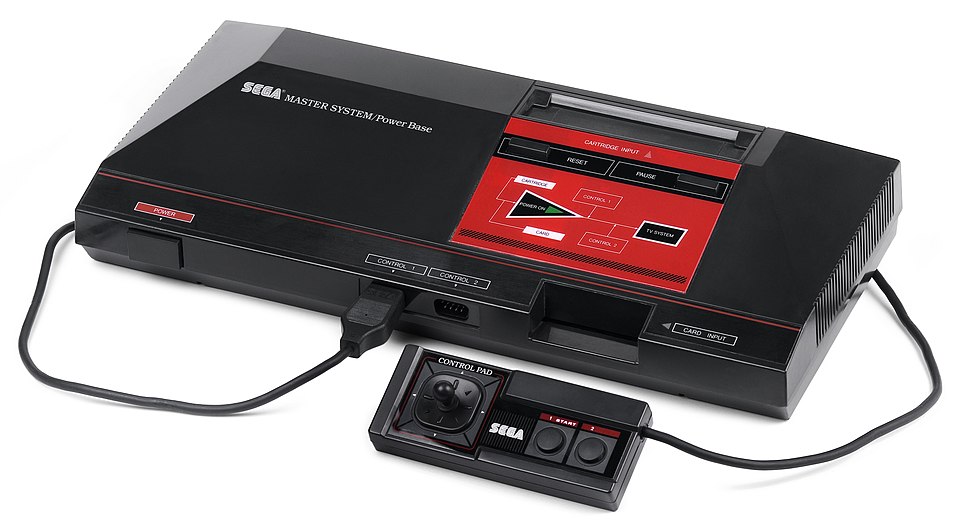The Sega Master System: A Deep Dive into a Classic 8-bit Console
The Sega Master System (SMS) was Sega‘s second home video game console, released in 1986. It competed with the Nintendo Entertainment System (NES) and, while ultimately losing the “console war” in North America, it found significant success in Europe, Brazil, and Australia. Here’s a comprehensive look at the system, covering its history, hardware, games, legacy, and more:
1. History & Development
- Origins: Developed as a successor to the SG-1000 (which was only released in Japan), the Master System was designed to be a more powerful and versatile console.
- Release Dates:
- Japan (as Mark III): October 20, 1986
- North America: August 1986
- Europe & Australia: 1987
- Brazil: 1989 (became hugely popular due to import restrictions)
- The Console War: The SMS launched with a lower price point than the NES, but Nintendo had already established a strong foothold with Super Mario Bros. and a robust third-party developer network. Sega struggled to match Nintendo’s software library and marketing power in North America.
- Brazilian Success: Brazil imposed restrictions on importing foreign-made consoles in the late 1980s and early 1990s. This allowed the Master System, which was manufactured locally by TecToy, to dominate the Brazilian market for years.
- Discontinuation: Sega officially discontinued the Master System in 1994, focusing on the Genesis/Mega Drive.
2. Hardware & Technical Specs
- Processor: Zilog Z80A 8-bit CPU running at 3.58 MHz
- RAM: 8 KB
- ROM: Up to 64 KB cartridges
- Graphics:
- Resolution: 256 x 192 pixels
- Colors: 64 colors, with 16 on screen simultaneously
- Sprites: 32 sprites, with a maximum of 8 per scanline
- Sound: Texas Instruments SN76489 PSG (Programmable Sound Generator) – capable of 5 channels of sound (3 square waves, 1 noise, 1 PCM)
- Ports:
- Cartridge slot
- Two controller ports
- RF output (for connecting to older TVs)
- Composite video output (on later models)
- Expansion port (for peripherals like the Light Phaser)
- Peripherals:
- Light Phaser: A light gun for shooting games.
- Paddle Controllers: For games like Arkanoid and California Games.
- Joystick: The standard controller.
- FM Sound Unit: An add-on that significantly improved the console’s sound capabilities (primarily in Japan and Brazil).
- SMS MK II: A redesigned, more compact version of the console released later in its lifespan.
3. Notable Games
The Master System boasted a diverse library, with many titles that are still fondly remembered today. Here are some highlights:
- Alex Kidd in Miracle World: Sega’s original mascot, predating Sonic the Hedgehog. A platformer with unique mechanics.
- Phantasy Star: A groundbreaking RPG with a female protagonist and a sci-fi setting. Highly influential.
- Wonder Boy III: The Dragon’s Trap: A classic action RPG with a unique transformation mechanic.
- Shinobi: A ninja action game known for its fast-paced gameplay.
- Zaxxon: A 3D isometric shooter.
- Hang-On: A motorcycle racing game with a unique arcade cabinet.
- Out Run: A fast-paced racing game with a vibrant soundtrack. (Often considered better on the Genesis/Mega Drive, but still a good port)
- Choplifter: A vertically scrolling shooter with a rescue theme.
- R-Type: A challenging side-scrolling shooter.
- Golden Axe Warrior: A spin-off of the popular Golden Axe arcade game.
- California Games: A collection of mini-games based on California sports.
4. Strengths & Weaknesses
Strengths
- Superior Graphics (in some cases): The SMS generally had slightly more colors on screen than the NES, leading to potentially more vibrant visuals.
- Faster Processor: The Z80A processor was faster than the NES’s 6502, allowing for smoother scrolling and more complex gameplay in some titles.
- Expandability: The expansion port allowed for a variety of peripherals.
- Strong Library in Certain Genres: The SMS excelled in action, arcade ports, and RPGs.
- Brazilian Popularity: Its dominance in Brazil created a unique and thriving gaming culture.
Weaknesses
- Smaller Game Library: The SMS had significantly fewer games released compared to the NES.
- Lack of Third-Party Support (in North America): Nintendo’s strict licensing policies made it difficult for third-party developers to release games on the SMS in North America.
- Marketing & Distribution: Sega’s marketing efforts were often overshadowed by Nintendo’s.
- Sound Quality: The SN76489 sound chip, while capable, was often considered inferior to the NES’s sound chip.
5. Legacy & Modern Relevance
- Influence on Sega: The Master System laid the groundwork for Sega’s future success with the Genesis/Mega Drive.
- Retro Gaming Community: The SMS has a dedicated following in the retro gaming community.
- Emulation: Master System games are widely available through emulation on various platforms.
- Re-releases: Some Master System games have been re-released on modern platforms through collections and online services.
- Homebrew Development: A small but active homebrew community continues to create new games for the system.
Where to Learn More
- SMS Power: https://www.smspower.org/ – A comprehensive resource for all things Master System.
- Wikipedia – Sega Master System: https://en.wikipedia.org/wiki/Sega_Master_System
- Retro Gamer Magazine: Often features articles on the Master System.
In conclusion, the Sega Master System was a capable and innovative console that, despite losing the console war in North America, left a lasting impact on the gaming world. Its unique games, technical capabilities, and cultural significance continue to be appreciated by retro gaming enthusiasts today.
